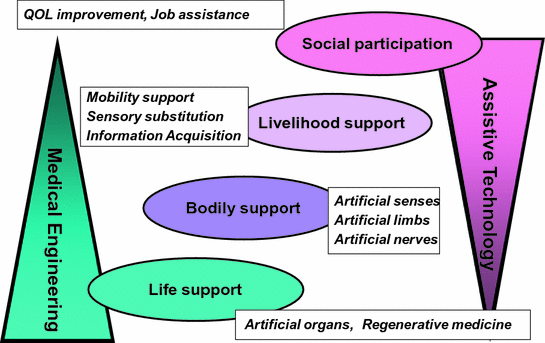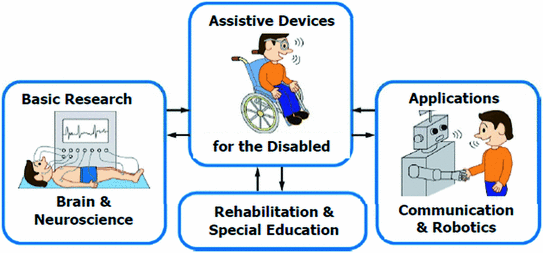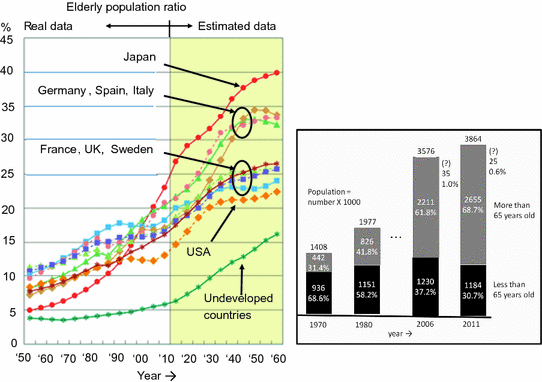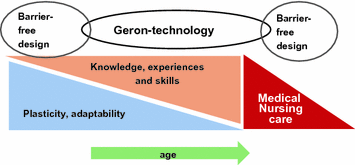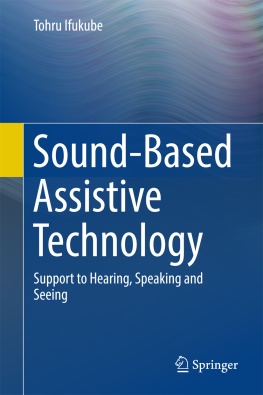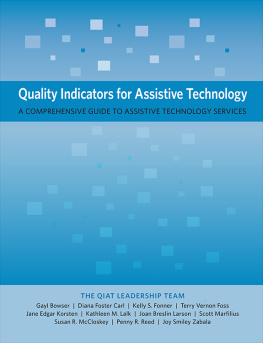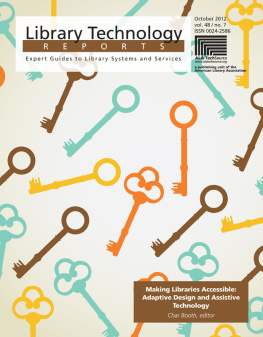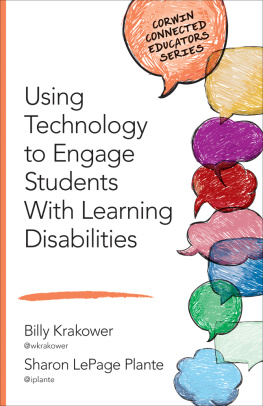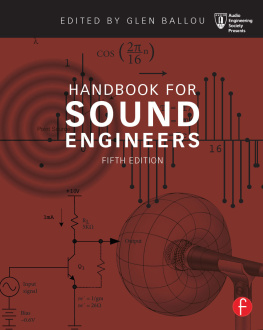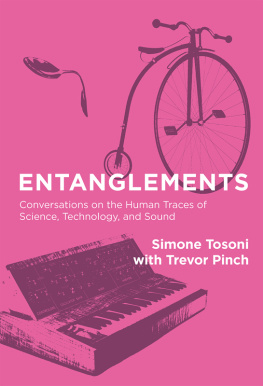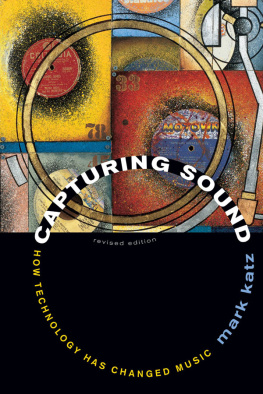1. Basis for Sound-Based Assistive Technology
Abstract
In this chapter, the author discusses the methodology as well as the basic concepts of assistive technology based on cybernetics that regards the human body as a feedback system comprising the senses, the brain, and the motor functions. In the latter part of this chapter, the author explains some mechanisms of the auditory sense and speech production of human beings that are needed to understand the contents of the book. The author introduces a national project called The Creation of Sciences, Technologies and Systems to Enrich the Lives of the Super-aged Society that he has promoted since 2010.
1.1 Background of Assistive Technology
In the field of medical engineering, medical doctors and engineers have eagerly combined their research efforts with the aim of developing life support technology such as artificial organs and regeneration medicine in order to prolong life. However, in the case of people suffering from disorders that cannot be cured by modern medical treatment, there is hope in particular that their disabilities may be compensated for by making use of cutting-edge technology. Bodily support technology such as artificial sensors and artificial limbs is a typical example for the compensation of the disabilities. Furthermore, the support technologies will give them the ability to take part in numerous social participation and activities for the sake of QOL improvement and job assistance system [].
Figure ]. As indicated in the subtitle Or Control and Communication in the Animal and the Machine, he described the human functions of senses, brain and limbswhich are essential for living an intellectual lifeas having similarities to the functions of the sensors, computers and actuators of automatic machines such as robots. Furthermore, he pointed out that homeostasis in both human beings and machines is maintained by feedback control systems. Thus, it can be said that assistive technology research lies in the undercurrent of cybernetics.
Fig. 1.1
Medical engineering and assistive technology
As shown in Fig. , the first point of departure in our research is to investigate and compare the mechanisms of the sensory systems, the brain functions, and motor ability in both healthy and disabled persons based on physiology and psychophysics, as shown in the left side of the figure. After obtaining knowledge through this fundamental research, the second stage is to design tools that will enable substitution or compensation of a persons senses or limbs, as shown in the center of the figure. If the artificial senses or limbs created for the disabled function well, they can serve as excellent replacements for their original receptors or limbs. Conversely, if the devices are defective or inadequate in some way, it is necessary to come full circle by returning to the original starting point of the first stage. This methodology can thus be characterized by conducting continuous cycles of research that eventually lead to the desired goal.
Fig. 1.2
Three stages of assistive technology research as presented in this study
Furthermore, the artificial senses or limbs thus created can be applied to computer pattern recognition as well as to robot actuators, as shown in the right side of the figure. This final stage could well result in healthy competition among manufacturers that would, in turn, lead to further improvements in this technology, creating a big market and making the price of the tools affordable. The author himself has realized significant progress by utilizing this approach in developing assistive technology over a period of more than 40 years.
On the other hand, as a highly advanced IT society is rapidly approaching, people have become surrounded by all sorts of information tools. As a consequence, more and more people are experiencing distress in their attempts to handle the complexity of both computers and the internet. In particular, a phenomena known as technostress is occurring on a wide scale, especially among the less technically inclined. This digital divide resulting from a knowledge gap is, in fact, becoming a major social issue. As information tools are especially difficult for the elderly and disabled to use, machines that can be operated with little or no conscious effort are in high demand. The role of assistive technology is therefore to achieve a state of universal accessibility that will empower anyone in society to easily reap the full benefits of the highly advanced IT.
1.1.1 Towards a Super-Aged Society
Currently, more than 25% of the Japanese population are over the age of 65, representing nearly 30 million people, as shown in the left side of Fig. ]. Almost the same situation as that currently prevailing in Japan will extend all over the world, especially in European and East Asian countries. These disabled elderly people all have some form of disability in terms of hearing, speaking, reading, thinking, or moving.
Fig. 1.3
Left Elderly population ratio [], right elderly disabled/total disabled in Japan
Assistive technology for elderly disabled people is referred to as geron-technology, which is distinct from barrier-free design technology that includes supporting young disabled people. As shown in Fig. ].
Fig. 1.4
Barrier-free design and geron-technology
Overcoming this aging of society is already becoming an increasing burden for the Japanese government.
As a result, many projects have been launched with the Ministry of Economy, Trade and Industry and the Ministry of Labor, Health and Welfare leading the way. The author was asked to promote a new project called The Creation of Sciences, Technologies and Systems to Enrich Society for the Aged in Japan, which is one of the strategic innovation projects for a super-aged society organized by the Japan Organization for Japan Science and Technology (JST) in 2010. The project started in 2010 and will continue until 2019. It should be possible to apply almost the same design approach for assistive tools for the elderly disabled as for the young disabled. A secondary purpose of the project is to create new assistive systems that will promote the social participation of healthy elderly persons as well as improve the quality of life (QOL) of elderly disabled persons.
Based on investigations into the functional ability of the elderly, the author divided elderly people into two groups: a healthy elderly group, and a disabled elderly group. In the project, for the healthy elderly, we strongly promote the design of assistive tools and systems so that the healthy elderly can participate in society. For the disabled elderly, we promote the design of rehabilitation technologies and nursing care networks so that the disabled elderly can live with a high QOL. These assistive technologies and systems will decrease social security expenses and may also increase employment and promote economic growth (Fig. ).
